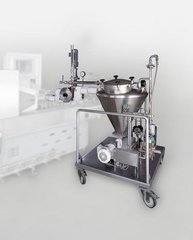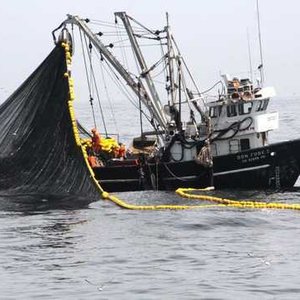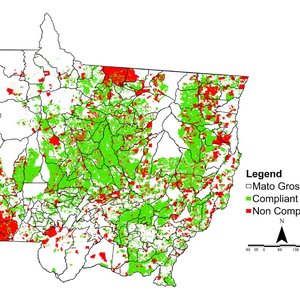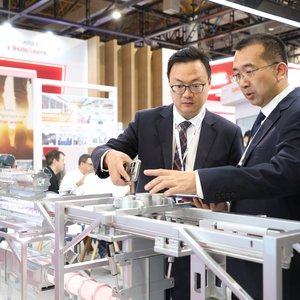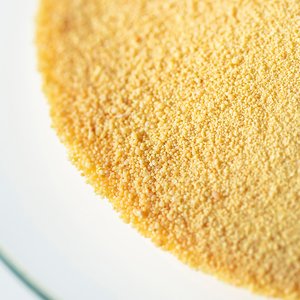Raw material is fed by a volumetric or gravimetric feeder into the two-stage conditioner. In the mixing section the dry product is blended with steam and water in a very short period of time before it is conveyed to the re-tention section where the mash is given time to heat up for the following extrusion. By means of a horizontal forced feeder, the product is then transferred to the twin-screw extruder.
The extruder barrels are divided by the SME-module into two process sections. In the first section the specific mechanic energy (SME) is set to optimize the cooking degree and the texture of the product. In the second section the product temperature at the die is controlled by the density control system, which will impact the degree of expansion and therefore the product density.
All these adjustments can be done on-line without changing the product moisture, without changing the screw configuration and without changing the screw speed. This minimizes operating expenses, cost and energy.
At the extruder head a special design cutter cuts the product into the desired length. The entire process is controlled by a PLC control with features such as setting and maintaining setpoint values, monitor process parameters and tracking recipes and data.
Controlled cooking and shaping in the extruder process
With the new ECOtwin extruder cooking degree and product density can be accurately adjusted and controlled. This is possible by the use of the patented modules SME- and density-control. With the density control module a major share of the thermal energy can be recuperated.
The SME-module consists of a throttling device with two valve cylinders. These are shaped to match the extruders inner housing in an open position. In closed position they match the screw diameter. By closing the valves, the dough pressure increases, filling degree and retention time add up. This leads to an increase of the specific mechanic energy (SME). The module can be put into any desired place along the extruder barrel. By doing so, the process sections cooking and forming can be separated.
Traditionally there are three parameters to influence the cooking degree within the extruder, by changing the moisture, by changing the screw configuration and by varying the screw speed. The influence of the SME by adjusting the product moisture is expensive, since additionally added water needs to be removed by drying with additional energy. The change of the screw configuration requires a lot of down time and raw material for shut down and start up. A change in the screw speed leads to changes in throughput. Usually an extruder operates at maximum speed to get a maximum capacity. Decrease of the screw speed leads accordingly to lower capacities.
All these disadvantages are eliminated with the use of a SME-module. It can be adjusted on-line and is kept within small tolerances.
The density control module consists of an open extruder barrel with a degassing spout and a vertical back feeder, which prevents the product from leaving the extruder process section.
Three operation modes are applied. With positive pressure steam is added, the temperature of the product and the expansion of the product increases, which produces a lighter pellet.
In neutral operation the steam from the extruder is exhausting and is brought back directly into the conditioner.
With negative pressure the steam will be removed by means of a vacuum system. The energy and emissions will be conveyed back to the conditioner, which saves a considerable amount of energy.
The product density can be adjusted independently of the cooking degree and controlled precisely, constant and continuously variable to a range between 200 - 700 g/l.



